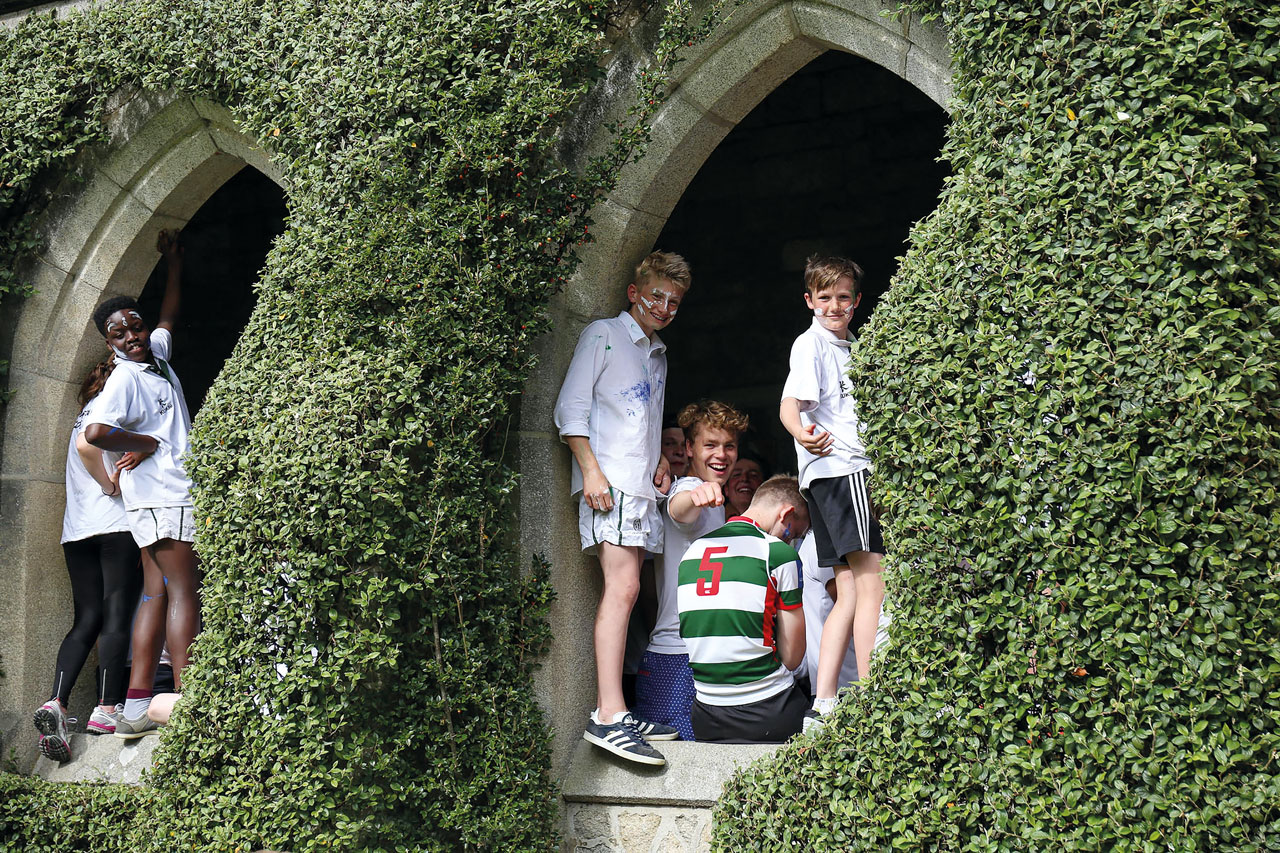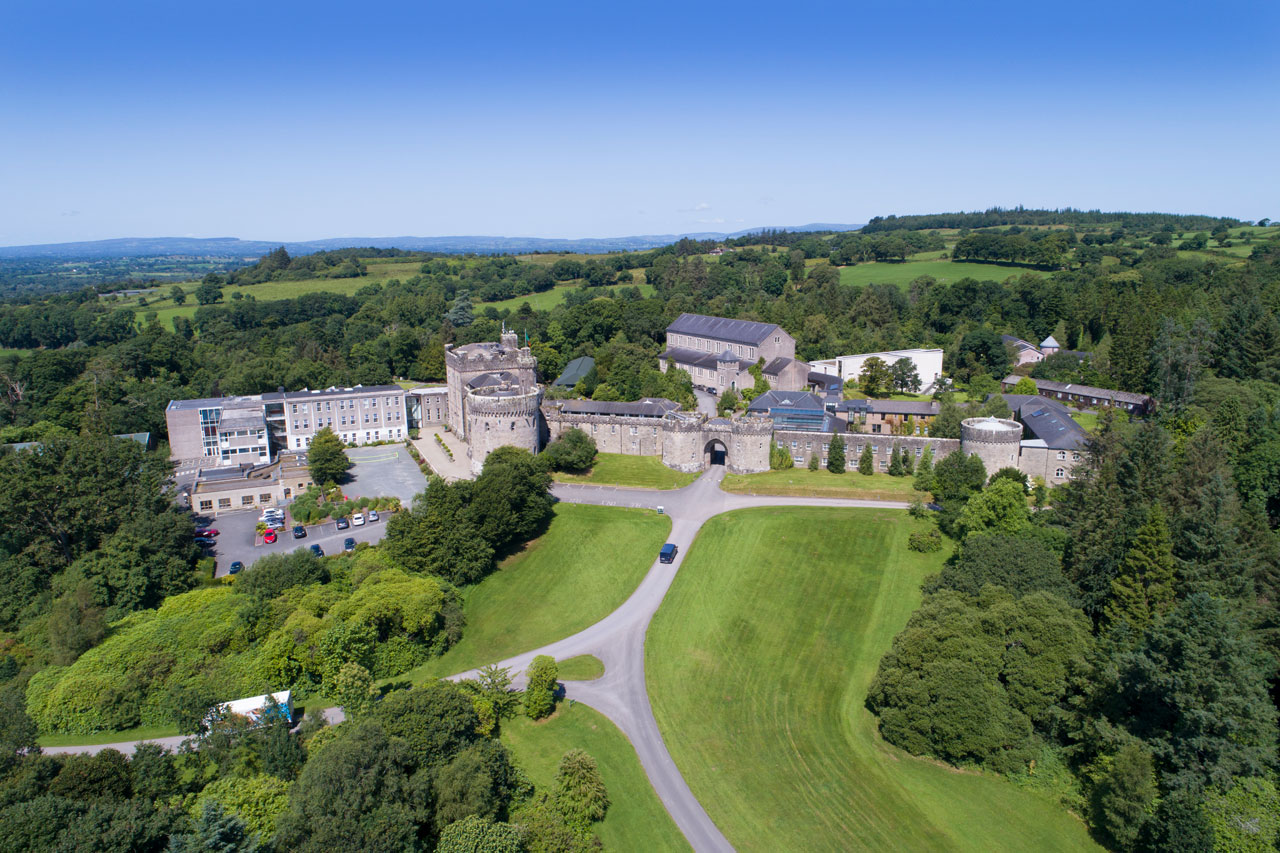
- HOME
- EDUCATION
A Celtic Education
Rory Reilly argues that parents interested in boarding their children should look to the Emerald Isle
By | 6 years ago
Full boarding on the island of Ireland may be half the cost of that on mainland Britain but it would be a mistake to imagine that what is on offer is an inferior product. Boarding in the Republic of Ireland is less expensive, simply because the state pays the salaries of many of the teachers and this removes a significant financial burden from school budgets. Quite a number of schools offer a mix of day and boarding but three offer top quality, seven-day boarding which compares favourably with that on offer by their higher profile cousins across the water: co-ed St Columba’s College with 340 pupils near Dublin and the two boys’ schools, Clongowes Wood College with 440 boys in County Meath and Glenstal Abbey with 250 boys in County Limerick.
Apart from the fees which hover around an annual €20,000 to €23,000, one significant difference between the UK and ROI is that schools in the Republic cannot select on the basis of academic ability. ‘When league tables are what matter most then preselection and screening out of children who are less academic becomes the most important thing,’ says Mark Boobbyer, head of St Columba’s, ‘it is a relief to be in a system where I can do what is best for each child rather than worrying about league table standings’.

St Columba’s College, Dublin
Fr William Fennelly, head of Glenstal, talks in terms of ‘making a virtue of the legal framework, and it works’. He sees the process of joining Glenstal ‘as a conversation between the parent and the school’. It must be child-focused if it is to work and the important question is ‘do we suit the child?’ not the other way around.
Like its UK counterpart, the Republic of Ireland’s curriculum has two set-piece examinations. The Junior Certificate is taken at the age of 15 and the Leaving Certificate at 18. This latter course
is studied over a pupil’s final two years and like the IB a minimum of six subjects are taken at Higher or Ordinary Level. Those applying to the top universities in Ireland, the UK, Europe or the US will generally take Higher Level courses whereas the Ordinary Level will allow access onto courses more suited to those whose interests may be less academic. The final qualification is in a points, rather than grade format and is accepted by all UK universities.
Between the Junior and Leaving Certificates sits the Transition Year. Without exams or a set curriculum this is an opportunity for schools and indeed pupils to set the agenda. Fr William Fennelly describes it as being ‘truly liberating’, a time when ‘pupils own their academic ambitions and choices, where they are free to learn different skills and studies, whether these are in the fields of engineering or drama’. During this year pupils go on exchange to schools in Germany, France, the US or Australia, engage in charity work and explore the nature of learning as well as the workplace. It represents a release from the confines of an examined curriculum and it allows schools the opportunity to focus on extra-curricular learning which is all too rare in today’s schooling. It is hugely popular with those coming to these schools from overseas as it provides a less pressured introduction to the Irish system before embarking on those final pre-university courses.
For expat families holding EU passports, the ROI schools offer yet another distinct advantage. Three years spent in an Irish boarding school grants non EEA domiciled pupils access to European universities at European rates. This can represent a huge saving. The top pupils will apply to Oxford or Cambridge, alongside Trinity and UCD and a small but significant number apply to the US and to Europe. Five from Glenstal went on to study in Holland last year while one went to Oxford and two more to NYU and Notre Dame in the US. St Columba’s regularly sends 20 to 30 per cent of its pupils to top Russell Group universities, while Trinity and UCD dominate the Clongowes’ list with one heading for Cambridge to read Natural Sciences and another to the US last year.
Boarding tends to run along a horizontal line with year groups moving up the houses together. Only St Columba’s runs along the more traditional British house system where houses are organised vertically, possibly because of the size of the schools with relatively small year groups. At the lower end, dormitories are the norm while sixth-formers tend to have single or double rooms, albeit not quite at Home Counties standard.
Despite working in the same jurisdiction and following the same curriculum, these three schools are quite distinctive. St Columba’s is a top class co-educational boarding school. It sits on a wonderful elevated site overlooking Dublin, just 35 minutes from the airport, in the foothills of the Wicklow Mountains. Head Mark Boobbyer, previously head of Tiger Kloof Educational Institute on the edge of the Kalahari in South Africa, has struck gold with this gem of a school. It has a familiar formality and the pupils wear gowns to lessons. It also ranks close to the very top when it comes to average points score per pupil at Leaving Certificate.

Glenstal Abbey School, Co Limerick
Clongowes Wood College, just 40 minutes west of Dublin, is the biggest boarding school in the country with 440 boys. This is the school of the modern-day politician, entrepreneur, international rugby player and member of the judiciary. Alumni include the literary greats, James Joyce and Oliver St John Gogarty, businessmen Michael O’Leary and Sir Michael Smurfit, and over three centuries of Irish politicians from John Redmond of the Irish Parliamentary Party to current Deputy Prime Minister Simon Coveney and former Taoiseach John Bruton. Deputy head Martin Wallace is tasked with developing an innovative educational philosophy which is more in tune with 21st-century needs but yet is compatible with a Jesuit education. Martin says, ‘While we frequently quote Yeats to the effect that education is not the filling of a pail, the reality has been that much of what we have been doing in our schools has been exactly that.’ He is convinced that both teaching methods and classroom design need to evolve. ‘Square boxes and straight lines of desks reflect the mindset of the Industrial Revolution with its emphasis on mass production and conformity of practice.’ He wants the new sixth-form centre to provide ‘spaces that stimulate creativity and innovation.’
Glenstal is a Benedictine School with a relaxed, informal feel. It is the smallest of these schools with just 250 boys. As the monks would have done in earlier times, pupils and staff address one another by their first names. This is not some liberal affectation, it is as it always has been here. While the library is a wonderful Hogwarts-style circular room, the classrooms are modern and spacious with glazing overlooking the botanical gardens below. The atmosphere is respectful, considerate and supportive. Turning out young men of integrity is important to William Fennelly, ‘what they actually do matters’. One of my nephews described his old school as ‘the organic farm’ of boarding schools, though I suspect rugby and hunting are more often topics of conversation than actual farming.
Apart from these three, a number of high quality schools in Dublin offer a mix of day and boarding. Co-ed King’s Hospital School is 40 per cent boarding, while the 90 or so boys at Blackrock represent just 10 per cent of the total roll. Wesley College has two boarding houses, for girls and boys, while Alexandra College and Rathdown School are girls only.
Headfort in County Meath is the only boarding prep school in ROI. The boys and girls live and learn in this huge rambling Georgian mansion which also houses the most magnificent Robert Adam interior. Some are prepared for entry to the cream of English public schools while many will move onto the schools mentioned above. It is a school which positively encourages the freedom of spirit. Pupils appear to run free, trees are climbed, forts built, ponies ridden across country, but headmaster, Dermot Dix, recognises that alongside this is the requirement to engage in quality academic learning which he provides with bundles of idiosyncratic style.
North of the border in Northern Ireland, the model is different. All the schools follow the GCSE, A-level programme but again fees are far below the rest of the UK. Campbell College in Belfast has the feel of a smaller Haileybury or Malvern with its impressive buildings from where you can actually see the planes land at Belfast City Airport. Campbell is a traditional boys’ school with a huge emphasis on sport, particularly rugby. Day pupils pass through a competitive 11+ process while the school has its own admissions criteria for the circa 200 boarding places.
The Royal School Armagh, which is to lose its dynamic head, Paul Crute, to the new Nord Anglia international day school in Dublin, has built up an impressive boarding section in a number of elegant town houses in the city of Armagh. With almost 150 boarders it rivals Campbell in terms of numbers. It has a very businesslike approach and does exactly what it says on the tin. It takes in bright kids and delivers them out in numbers to Queen’s Belfast, Trinity Dublin and a variety of English and Scottish universities. Boarding at the co-ed Rockport, to the east of Belfast, and at the all girls Victoria College is on a much smaller scale.
We try so hard to get it right for our children when choosing schools but for many the fees for boarding are prohibitive. If boarding is a model you are drawn to then do think about taking the short flight to Dublin or Belfast. Irish schools offer a valid alternative to the UK. With a far less stressful entry processes and shorter lead-in times, schools in northern Ireland and the ROI appear to be both accessible and affordable.
This article was originally published in the spring/summer 2018 issue of School House.
READ MORE: Co-ed or single sex? | Boarding Prep Schools are in a Class of Their Own



